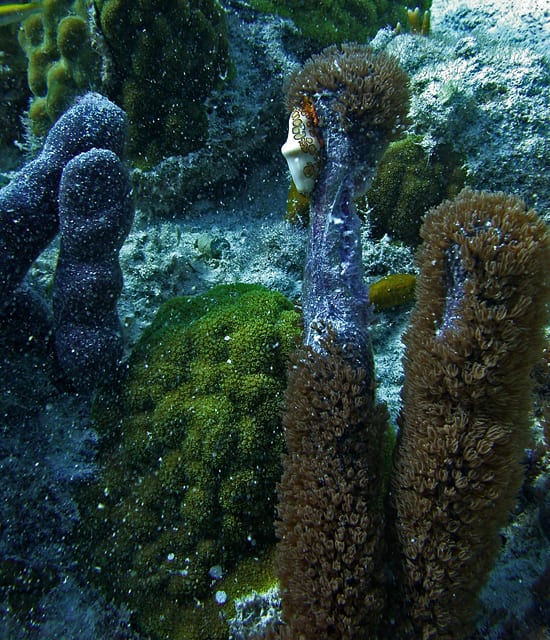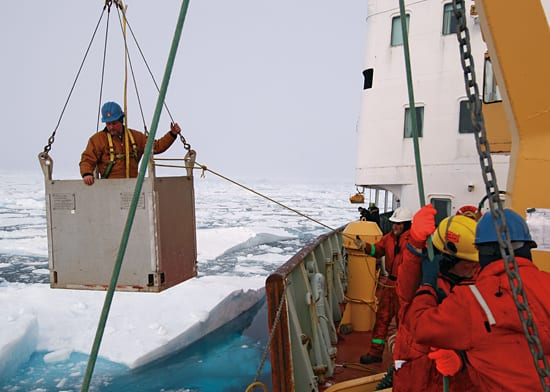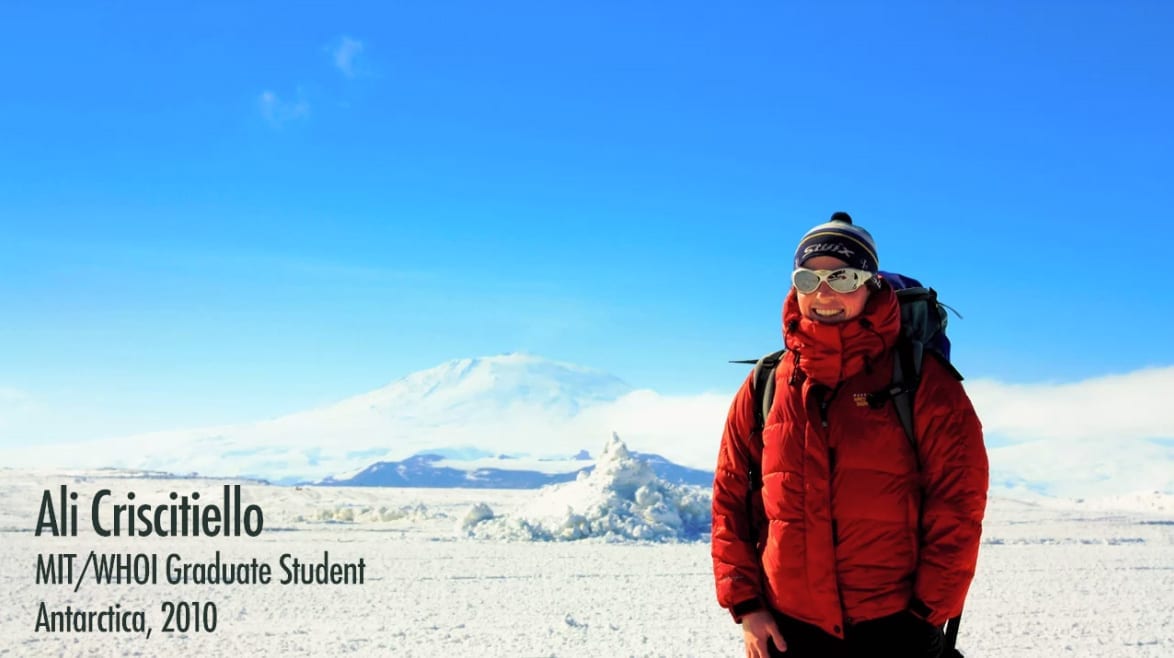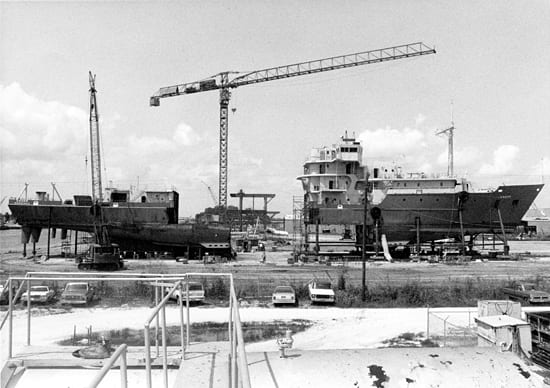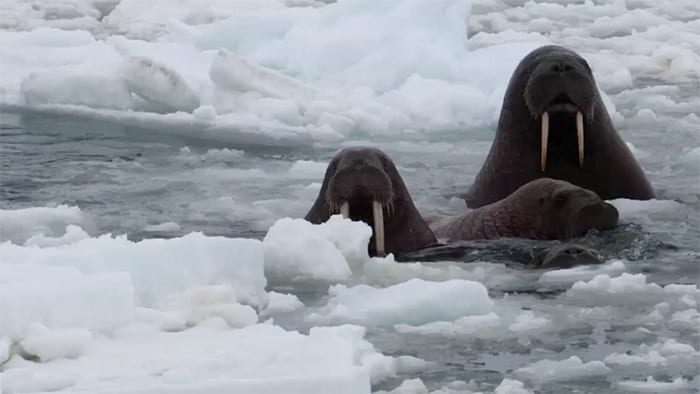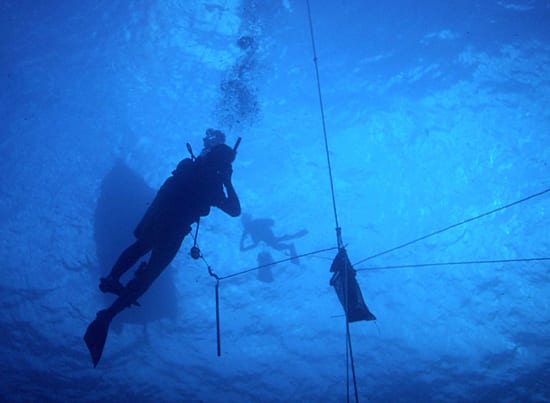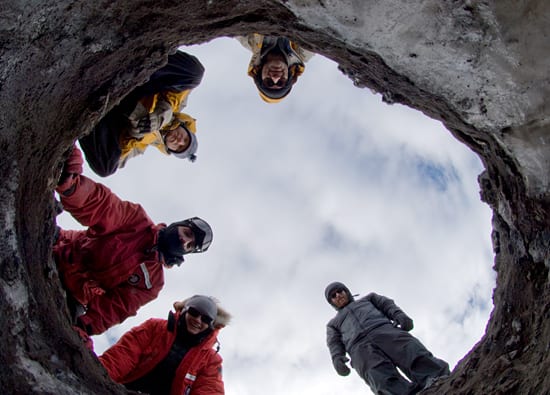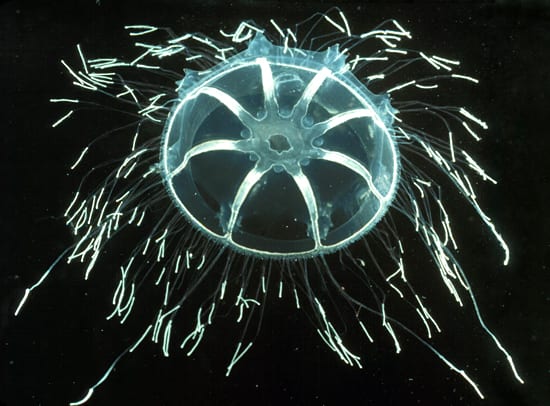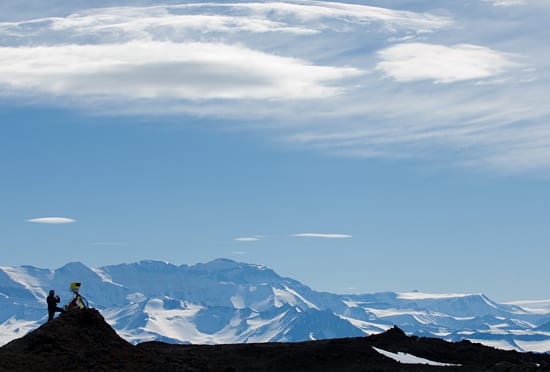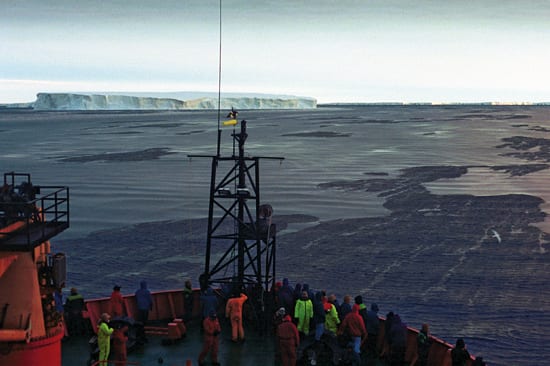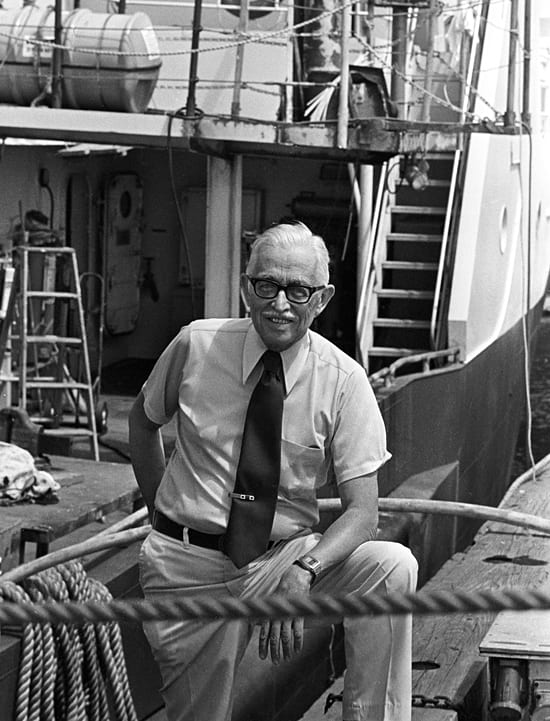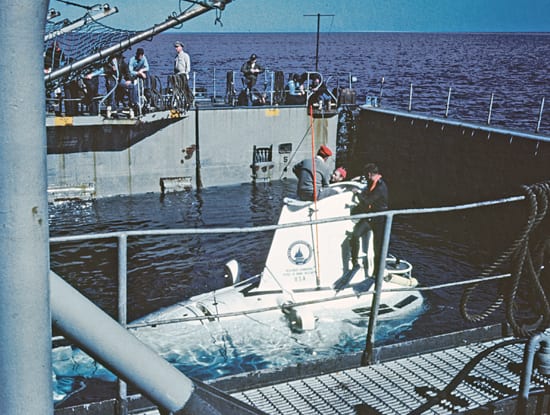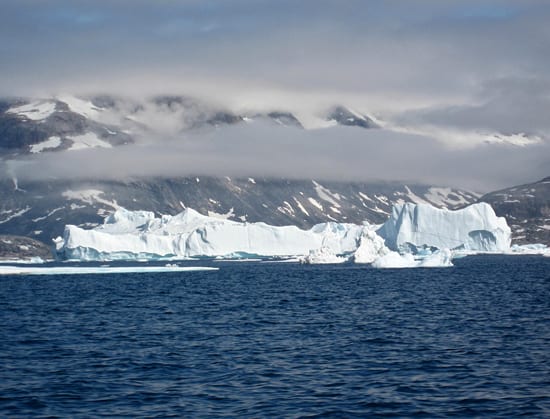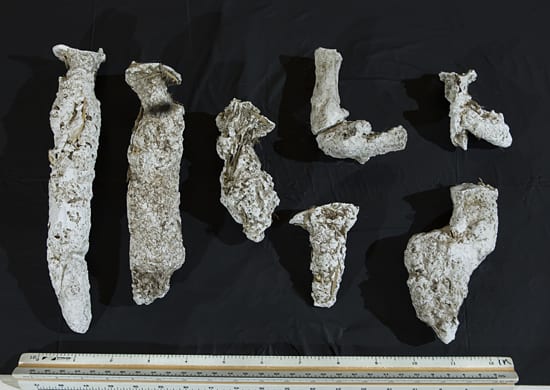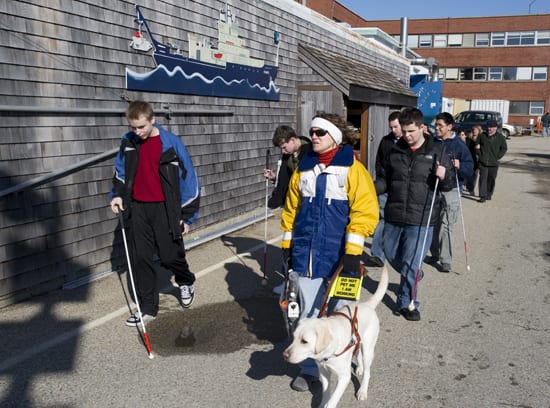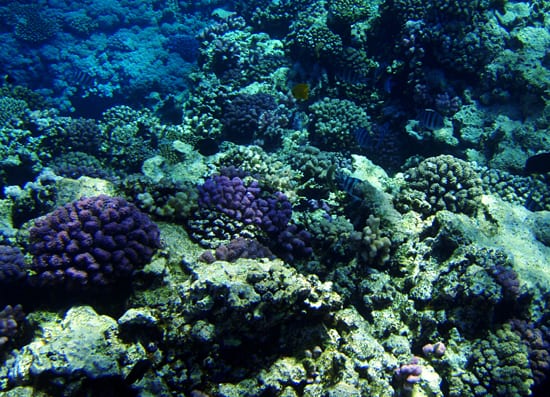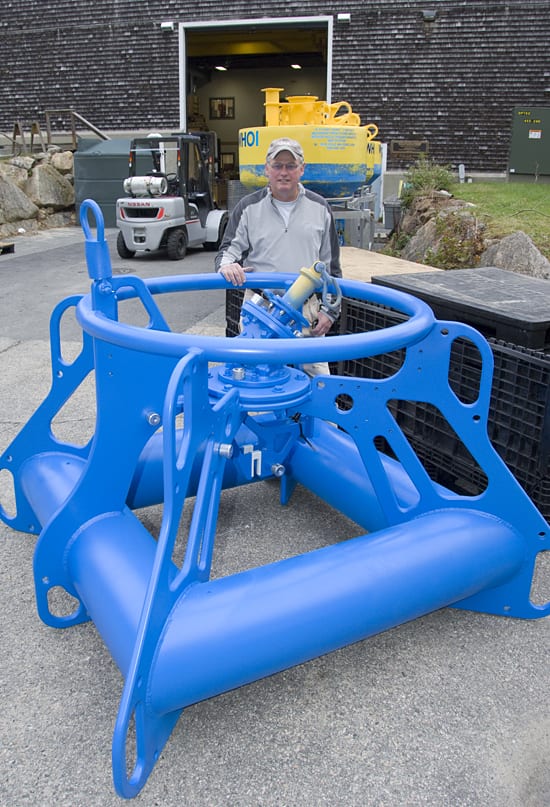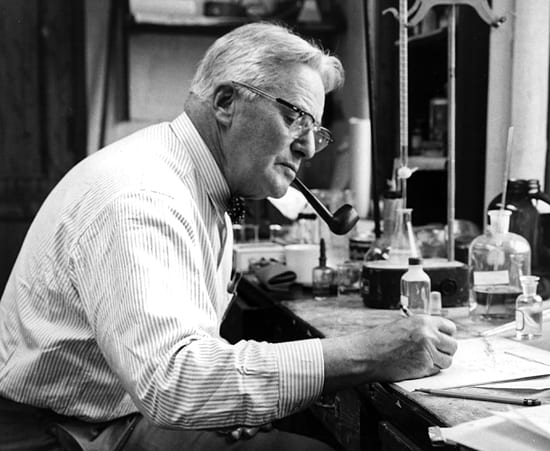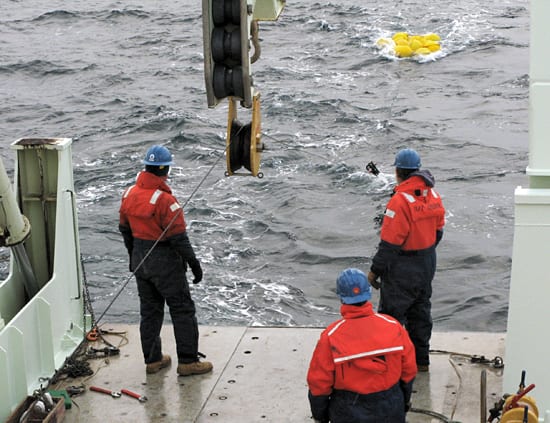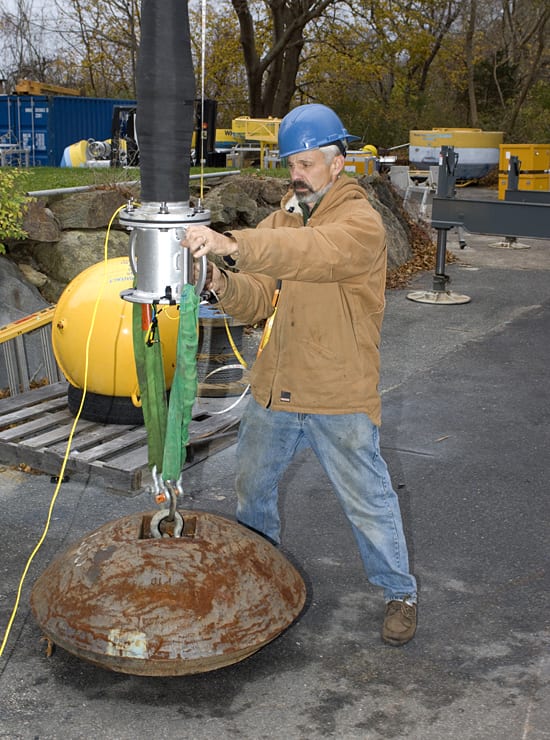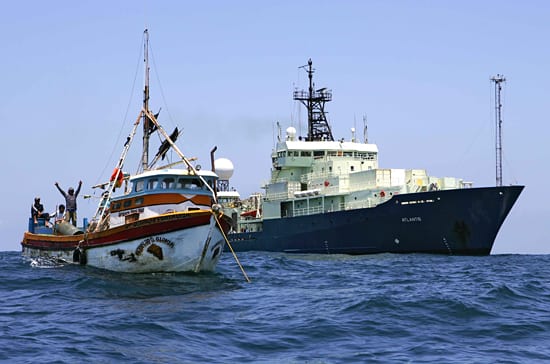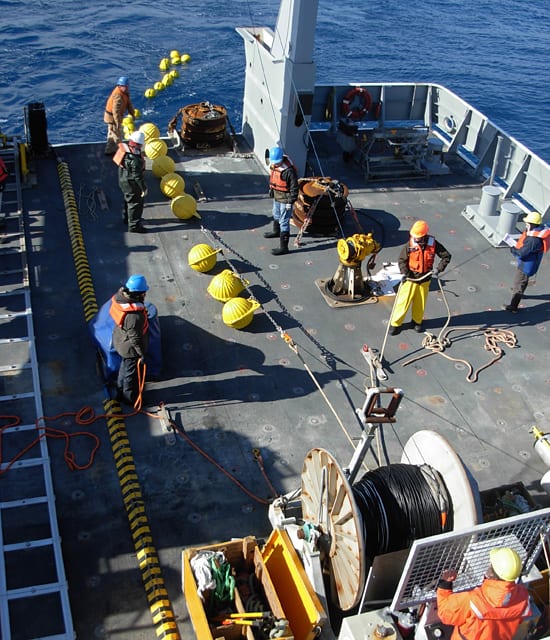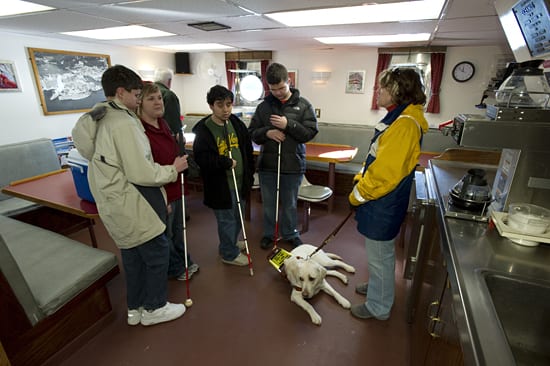Multimedia Items
Eating its way up the food chain
An orange-speckled snail, Cyphoma gibbosum, munches its way up one of its favorite meals, a purple gorgonian with brown grass-like polyps named Biareum asbestinum, known locally as “dead man’s fingers”…
Read MoreOver the edge
John Kemp of the WHOI Applied Ocean Physics & Engineering Department goes over the side in a ship’s basket to take hold of a 4,000-meter mooring being retrieved in heavy…
Read MoreScientist Who Loves the Cold
MIT/WHOI graduate student studies ice in a warming world.
Read MoreTwo halves make a larger whole
A R/V Knorr refit from 1989-1991 included lengthening the vessel by 33 feet (10 meters) to 279 feet (85 meters). The ship was cut in half at McDermott Shipyard in…
Read MoreLife in the Arctic…After Climate Change
By Christopher Linder, Lonny Lippsett :: Originally published online November 24, 2009
Read MoreInto the open ocean
Open-ocean SCUBA diving from research vessels began to reveal more about the world of jellies during cruises in the 1970s. To make their collections and observations and avoid becoming lost…
Read MorePeering into a pit
WHOI scientists set up an isolated research camp in the cold Dry Valleys in Antarctica in December 2007 on a monthlong expedition to explore how the volcanic landscape formed and…
Read MoreTentacled predators
Probably the most familiar jellies are jellyfish, such as this one—technically called medusae, and belonging to two divisions of the phylum Cnidaria. Jellyfish are predators that use tentacles studded with…
Read MoreExploring a volcanic landscape
WHOI scientists set up an isolated research camp in the cold Dry Valleys in Antarctica in December 2007 on a month-long expedition to explore how the volcanic landscape formed and…
Read MoreTesting the waters
Scientists aboard the Australian research vessel Aurora Australis studied the natural cycling of iron in the Southern Ocean in 2001. Ken Buesseler, a marine chemist at Woods Hole Oceanographic Institution,…
Read MoreA national leader in ocean sciences
As the Institution’s fourth director, from 1958 to 1977, Paul Fye presided over a period of major change. It was a time of great national interest in basic science, including…
Read MoreRed beret
During the search for a U.S. hydrogen bomb lost in the Mediterranean off Spain in 1966, the Human Occupied Vehicle Alvin operated from a Navy dock landing ship. The red…
Read MoreTracking Greenland’s glacial retreat
Recent changes in ocean circulation in the North Atlantic are delivering larger amounts of subtropical waters to the high latitudes. A research team led by Fiamma Straneo, a physical oceanographer…
Read MoreStill toxic after all these years
In 1969, the barge Florida ran aground off Cape Cod, spilling 189,000 gallons of fuel. Prevailing winds blew oil from the barge into Wild Harbor in Falmouth, Mass., where decades…
Read MoreLeading the way
Physical oceanographer Amy Bower leads a group of students from the Perkins School for the Blind to the WHOI dock for an onboard tour of the R/V Oceanus. Students from…
Read MoreIndicators of ocean health
Tropical coral reefs make up a small part of Earth’s ocean but are among the most diverse, productive ecosystems in the world. The fisheries and tourism that reefs support make…
Read MoreDesigned for shallow water
Engineering assistant John Kemp stands behind the Multi-Function-Node (MFN) designed for the Ocean Observatory Initiative for use in shallow water applications. Generally moorings have numerous sub-surface components, such as sub-surface…
Read MoreWill you be my Naphthalene?
This image of a single molecule of crude oil from the Gulf of Mexico appears to have an intrinsic sense of romance on Valentine’s Day. WHOI scientists Bob Nelson and…
Read MoreLife in the sea
Biologist Alfred Redfield in his lab, circa 1955. Redfield joined the WHOI staff as senior biologist in 1931 and was Associate Director from 1942 to 1956. His broad marine research…
Read MoreFlow of the Hudson Strait
Aboard the R/V Knorr in the Hudson Strait, engineer John Kemp (left), Knorr Bosun Pete Liarikos (right), and Dara Tebo of the Physical Oceanography department, work to recover a mooring.…
Read MoreStretch it
Senior engineering assistant William Ostrom tests a stretch hose that will be utilized on moorings and buoys for the Ocean Observatory Initiative (OOI). The specially designed cable, which stretches like…
Read MoreHands across the water
The crew aboard the R/V Atlantis extended a helping hand to a fishing vessel in distress off the coast of Peru on Jan. 20, 2010. The vessel, the Peruvian long…
Read MoreSound sources
WHOI senior engineering assistant Brian Guest (top of photo) leads a team to deploy the first of two sound source moorings in the Southeast Pacific as part of a Diapycnal…
Read MoreOceanInsight
Amy Bower, of the WHOI Physical Oceanography department, gives a tour of the R/V Oceanus to a group of students from the Perkins School for the Blind. Bower, who is…
Read More
